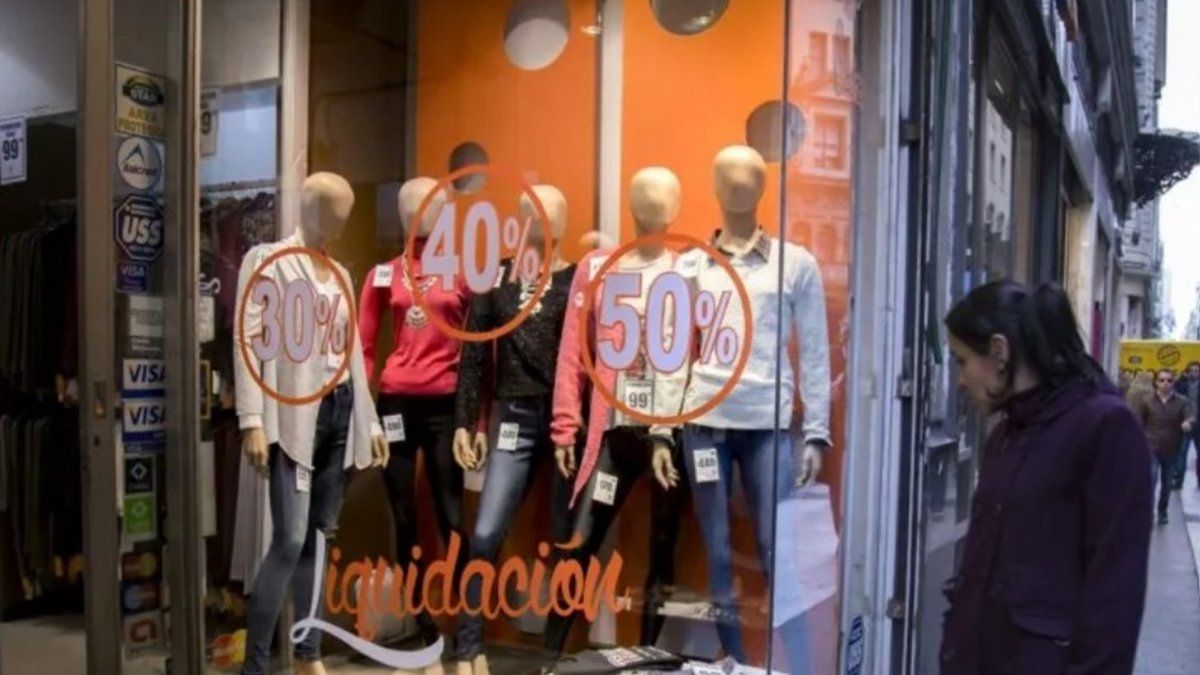In addition, they detailed that in the first month of the year “spending turned more to services such as tourism, leisure, recreation or gastronomy, postponing purchases of regular seasonal goods, such as clothing or footwear. These two items saw their sales levels decrease compared to January of last year”. Another factor that could have influenced the year-on-year contraction was the high base of comparison: is that, as pointed out, “January 2022 was a good month.”
After a negative start to the year, the sector assures that 2023 will be a challenging year and that the evolution of sales will depend “on the level of inflation and the level of activity, with the drawback of the lack of foreign currency”. “We expect difficulties, but also to be able to maintain minimally the level of 2022”, stood out from CAME to Ámbito. Last year, the retail sales reported by the entity presented an annual growth of 1.2%.
In this regard, a report from the consulting firm Abeceb projected a few weeks ago the difficulties that consumption in general will face this year: “With salaries that this year will be relegated to inflation, families that are already over-financed (by the Now programs) , rising service and transport rates and the prices of the basket (such as food) that will continue to rise, consumption this year will grow only 1.7%, far from the bonanza of 8.5% that it exhibited in 2022”.
Survey
As detailed in the CAME report, “the businesses consulted indicated that people ended the year with heavily charged cards and that made low-value purchases prevail”. Precisely, during January there was a contraction in the use of credit cards in the year-on-year comparison.
As can be seen from the report prepared by the consulting firm First Capital Group, credit card transactions grew 6.3% monthly and 80.6% year-on-year in the first month of the year: in the second case, below inflation for the same period, which represents a drop in real terms. “As is repeated every year, the holiday period marks an increase in the use of this means of payment and credit, but on this occasion, the growth is minimal in real terms: without a doubt, consumers make efforts to keep their budget balanced, on the one hand; and on the other, there is caution from financial institutions when expanding credit limits and offering a greater number of installments to pay off balances”.
When analyzing the evolution of sales by activity, from CAME they pointed out that, Of the seven sectors surveyed in January, three fell in the year-on-year comparison, and the remaining four increased.
In this sense, the entity highlighted that in the case of “Food and beverages”, sales in January grew 3.6% annually and 0.2% monthly, at constant prices. “43% of the businesses measured indicated that their sales were good or very good. The month was calm. People were measured with purchases, searched for prices, chose a higher proportion of second brands, and took few extra products along with the main items, ”the study detailed.
While, “Bazaar, decoration, home textiles and furniture” had a contraction of 0.4% annually and 4.7% monthly, at constant prices. “The drop compared to December is seasonal and was to be expected. The price increases, the delays in replenishing stock and the overloaded credit cards after the end of the year holidays limited the sales of this branch”, they remarked from CAME.
In “Shoes and leather goods”, sales fell 2.5% annually and 4.1% in the monthly comparison, always measured at constant prices. “Only 28% of the businessmen consulted evaluated that their profits were good or very good. For the rest, regular, bad or very bad”, they analyzed.
The item “pharmacy” was the one that grew the most in the interannual comparison (10.7%), but had a retraction of 6.7% per month. “The measured pharmacies had a good month, but more was expected. Above all, in tourist cities, where there was little movement in relation to the number of people who circulated. A general complaint from those who work with obras sociales, are the greater price regulations that are taking place, and have an impact on the profitability of the business,” the study explained.
For his part, in “Hardware, electrical materials and construction materials”, sales rose 0.4% annually in January, but fell 2.9% in the monthly comparison. “Textiles and clothing” had a new fall of 14.4% per year at constant prices, it was the item with the worst performance. Compared to December, sales fell 5.6%. “The stores were already coming from a December that did not meet expectations and in January there was no break in the trend,” they detailed from CAME.
Finally, In the “perfumery” category, sales rose 5.3% annually in January at constant prices, but fell 8.3% in the monthly comparison. “Low-value products and mostly of national origin were sold. Businesses in tourist cities fared better than the rest, with the passing buyer standing out,” the report concluded.
Source: Ambito




